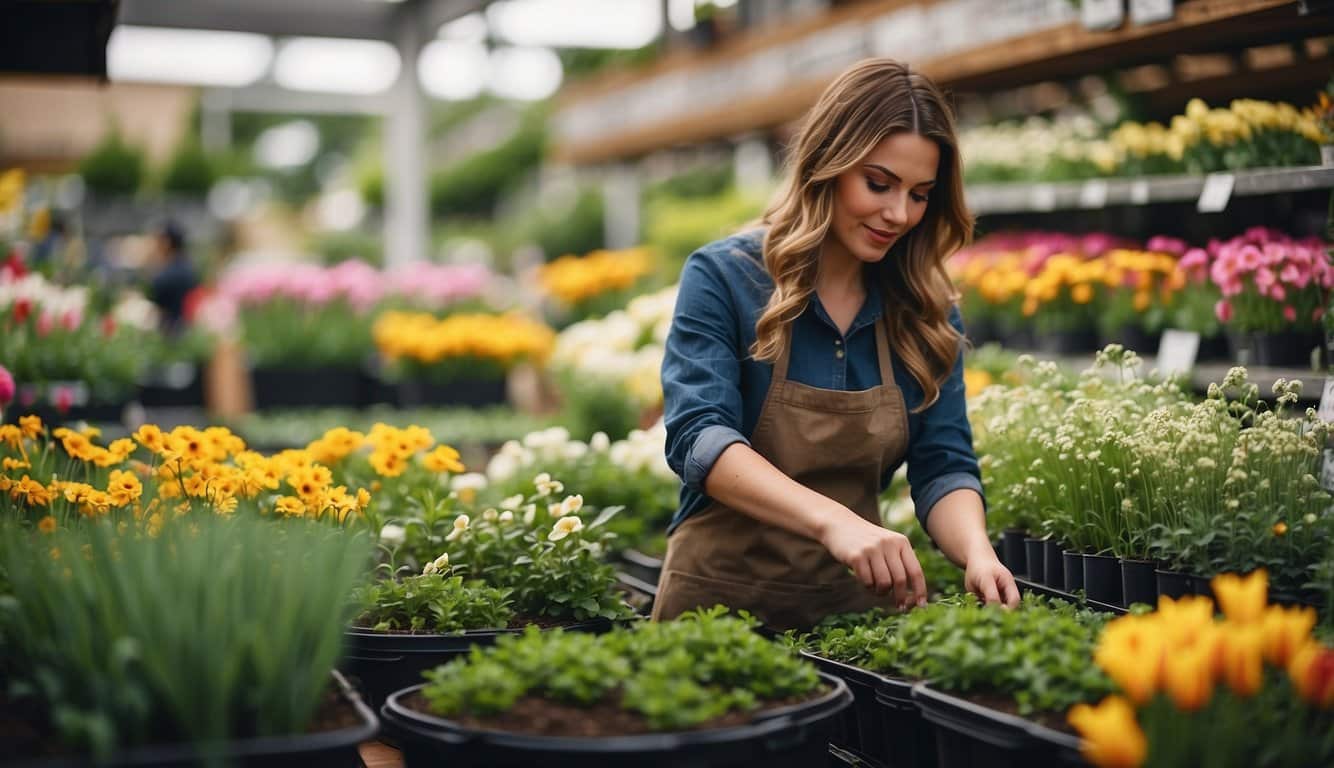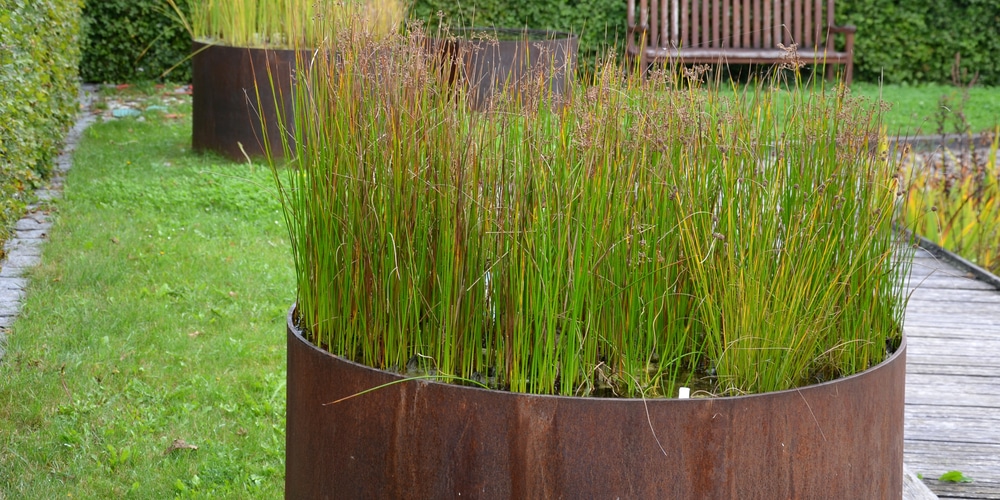Choosing Containers for Spring Blooms
When selecting containers for your spring-blooming plants, you want to ensure that both the aesthetics and functionality match your gardening goals. Here are some key points to consider:
- Size Matters: Choose a container that provides ample space for roots to grow.
A general rule is to pick a pot that is at least 1-2 inches larger in diameter than the plant’s root ball. For bulbs, a deeper container will accommodate the necessary planting depth.
- Material Selection:
- Terracotta: Breathable and classic, but can dry out quickly.
- Plastic: Lightweight and retains moisture, but may not have the same aesthetic appeal.
- Wood: Sturdy and natural-looking, make sure it’s treated to resist rot.
- Metal: Sleek and modern, these can heat up, which may not suit all plants.
- Drainage Is Key: Ensure your container has proper drainage holes to prevent waterlogging.
If necessary, drill additional holes to improve drainage.
- Weight Considerations: Heavier pots are stable and resist tipping but may be difficult to move.
Consider the pot’s weight when it contains soil and a mature plant, especially if you plan to move it around.
- Think Vertical: For small spaces or to add visual interest, consider using vertical planters or hanging baskets.
- Grouping for Effect: Group pots of varying heights and sizes to create a more dynamic display. Make sure each pot has room to shine.
- Preparing Your Pot:
- Cover the drainage holes with a porous material to prevent soil from escaping.
- Choose a quality potting mix suitable for the plants you’re growing.
- Water the pot thoroughly after planting to settle the soil around the roots.
Selecting Spring-Blooming Plants
Embarking on a spring-blooming container garden adventure begins with choosing the right plants that will flourish in your specific conditions. Selecting appropriate varieties is crucial for creating a vibrant display that can handle your local climate and thrive in the available sunlight.
Consider Climate and Sunlight
- Assess Your Area: Determine how many hours of sunlight your container garden will receive daily and whether it will be full sun, partial shade, or full shade.
- Match Plants to Conditions: Choose plants known to thrive in your region’s climate and the sunlight levels your garden area receives.
Plant Hardiness and Seasonality
- Know Your Zone: Use the USDA Plant Hardiness Zone Map to identify your zone, which helps pinpoint which plants are most likely to succeed in your location.
- Season-Appropriate Selection: Opt for plants that will bloom during the spring months in your hardiness zone.
Soil and Fertilization for Container Gardens
When cultivating spring-blooming container gardens, selecting the appropriate soil and fertilization regimen is paramount. Your plants depend on you for their nutrients and the environment in which they grow.
- Soil Mix: Begin with a high-quality potting mix, which ensures good drainage and aeration.
- Do not use garden soil alone as it can compact and hinder root growth.
- A mix with peat, pine bark, and perlite or vermiculite is recommended for most container plants.
- Nutrient Requirements:
- Nutrients are crucial; container plants cannot draw from the earth’s resources as ground-planted specimens can.
- Utilize a balanced, slow-release fertilizer to provide a steady supply of nutrients.
- Fertilization Schedule:
- For vigorous growers: A liquid fertilizer every 2-4 weeks during the growing season might be necessary.
- For slow growers or established plants: A granular, slow-release fertilizer can last up to several months.
Best Practices for Fertilization:
- Always water your plants before fertilizing to avoid root burn.
- Follow the manufacturer’s instructions on quantities; more is not always better.
- Monitor your plants for signs of nutrient deficiency (yellowing leaves, stunted growth) and adjust fertilization accordingly.
Planting and Arrangement Techniques
When planting spring-blooming bulbs in containers, your goal is to create a display that maximizes visual impact. Start with these steps:
- Choose Right-Sized Containers: Your containers should be large enough to accommodate bulb roots without crowding. Ensure there are drainage holes.
- Select Quality Bulbs: Opt for bulbs without any signs of damage or disease. Larger bulbs tend to yield more blooms.
Soil and Fertilization: Use well-draining soil and mix in a slow-release bulb fertilizer to give your plants a strong start.
Planting Depth and Spacing:
- Plant bulbs at a depth three times their height.
- Place bulbs with the pointy end up and space them about 3 inches apart.
Layering Bulbs (Also known as “Lasagna Planting”):
- Bottom Layer: Begin with larger bulbs like daffodils or tulips.
- Middle Layer: Add a layer of soil, then plant medium-sized bulbs, such as hyacinths.
- Top Layer: Top with more soil and finish with smaller bulbs like crocus or grape hyacinth.
Arrangement Tips:
- Grouping: Plant bulbs in groups or clusters for a full, lush look.
- Companion Planting: Pair your bulbs with perennial plants that will fill in as bulb foliage dies back. Consider flowers with variegated foliage for sustained interest.
Watering and Maintenance
To ensure your spring-blooming container gardens remain vibrant and healthy, adhering to a precise watering routine and managing pests and diseases is crucial. Your plants rely on you for their optimal growth conditions.
Regular Watering Schedule
- Monitor Soil Moisture: The key to successful watering is to keep the soil consistently moist, not saturated.
- Morning Watering: Watering in the early morning is best as it gives the plants time to absorb moisture before the heat of the day, which can reduce evaporation losses.
- Drainage: Make sure your containers have adequate drainage to prevent waterlogged roots that can lead to root rot.
- Water Quantity: Generally, aim to provide 1 inch of water per week, but adjust based on weather conditions and the specific needs of your plants.
Pest and Disease Management
- Regular Inspection: Check your plants frequently for signs of pests and diseases. Early detection means easier management.
- Natural Solutions: Whenever possible, opt for organic and natural pest control solutions like neem oil or insecticidal soaps to avoid harming beneficial insects.
- Isolate Infected Plants: To prevent the spread of disease, quarantine any affected plants away from the healthy ones.
- Healthy Practices: Keep the foliage dry when watering and clean up debris to minimize disease risks.
- Healthy Practices: If a plant is beyond saving, remove it to protect the rest.
Frequently Asked Questions
Spring blooms bring a vivid splash of color to your home and garden. These answers will guide you to nurture a vibrant spring-blooming container garden with ease.
How do you prepare potted plants for spring?
- Inspect Your Plants: Check for signs of disease or stress. Pruning dead foliage jumpstarts healthy growth.
- Refresh the Soil: Replace or rejuvenate existing potting mix to ensure nutrients are available for new growth.
What are the best low maintenance outdoor potted plants?
- Succulents: Drought-resistant and requiring minimal care.
- Geraniums: Colorful and resilient, they thrive with basic attention.
How do you take care of outdoor potted plants?
- Regular Watering: Maintaining consistent soil moisture is crucial.
- Appropriate Sunlight: Ensure plants receive the right amount of daily sun or shade as per their specific needs.
- Fertilizing: Use a balanced, slow-release fertilizer to promote steady growth.
What is the best soil for container flowers?
- Well-Draining Potting Mix: Prevents waterlogging, while retaining enough moisture for hydration.
- Enriched with Organic Matter: Promotes strong root development and plant health.
Which flowers thrive in containers in early spring?
- Pansies: Hardy and can tolerate cooler temperatures.
- Petunias: Fast-growing with a long blooming period and a variety of colors.
What are some creative ideas for arranging spring planters?
- Layer Heights: Combine tall, medium, and trailing plants for dimension.
- Color Coordination: Choose a color scheme for a harmonious display.
Last update on 2024-05-01 / Affiliate links / Images from Amazon Product Advertising API




